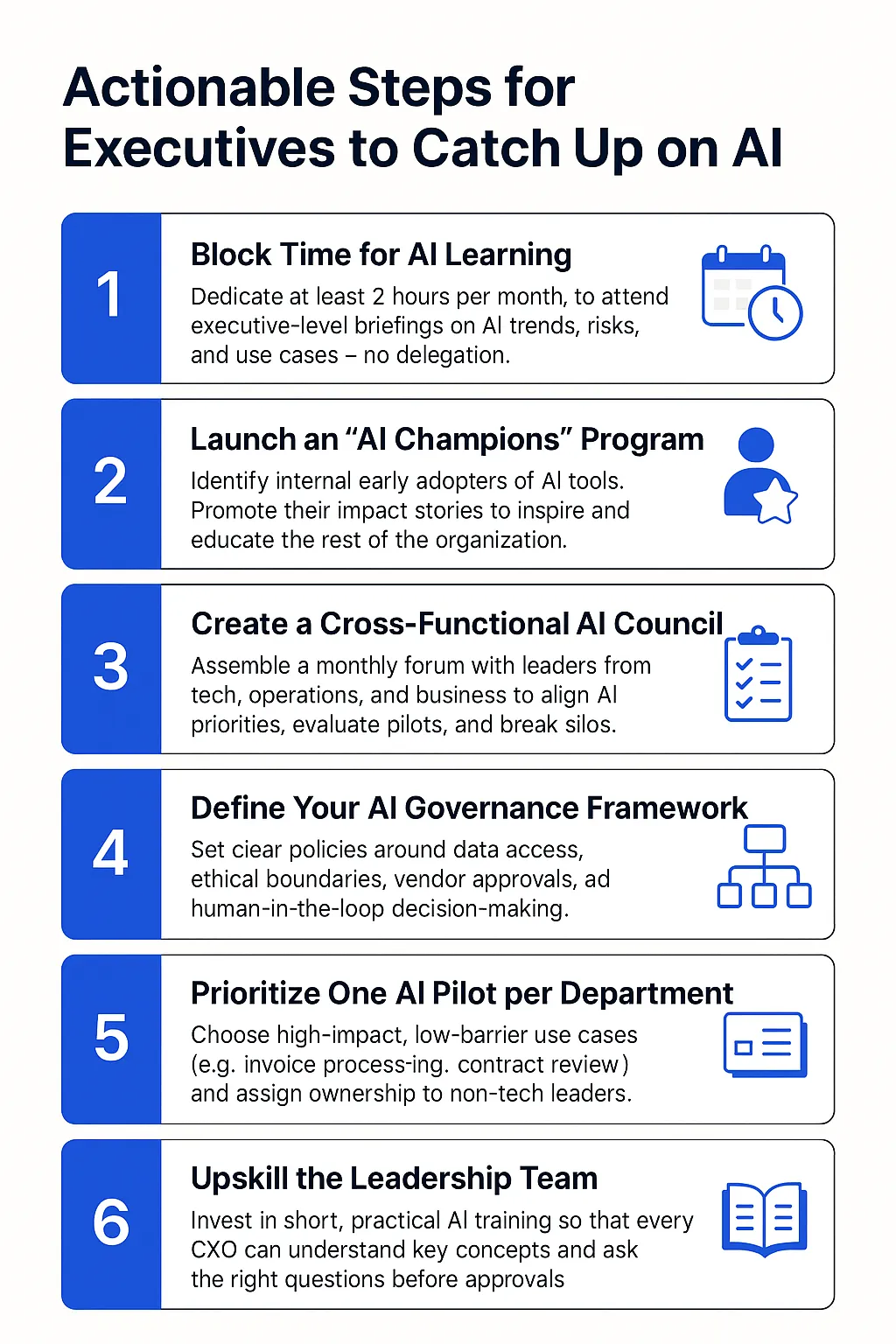.webp)
“Wait — what’s an agent again? Is that like a chatbot or… smarter?”
The room went quiet. Then someone chuckled. Then another executive chimed in: “Honestly, I’ve been meaning to ask the same thing.”
This wasn’t a startup in stealth mode. It was a Fortune 500 boardroom. And the conversation wasn’t about some far-off technology — it was about the AI systems they’d already committed tens of millions of dollars to integrate.

While 97% of CEOs say AI is mission-critical, only 1.7% feel truly prepared to lead their organizations into the AI era.
This isn’t a small gap — it’s a canyon. A growing divide between those building AI systems and those making decisions about them. A generation of leaders is finding itself in unfamiliar territory, betting billions on a technology they don’t fully understand.
We’ve been here before. During the rise of SaaS, during the IT revolution, during cloud.
But this time is different — because AI isn’t just a platform shift. It’s a power shift.
AI agents aren’t just tools — they’re autonomous, evolving, decision-making entities.
And the stakes? They’ve never been higher!
A 2025 global survey by Cisco found that while nearly every CEO plans to integrate AI across operations, fewer than 2% feel equipped to do so effectively. Even more telling? 74% of those same executives admitted that their lack of understanding could lead to poor decisions or stifle innovation. [Cisco AI Readiness Report, 2025].
These aren’t executives ignoring AI — they know it’s important. But they’re navigating blindfolded, relying on jargon-heavy decks from their tech teams or third-party vendors to make bets worth millions.
And when you dig into how few have actually trained on AI fundamentals — 58% of executives have never taken a single course or workshop on AI — it starts to make sense why so many feel out of their depth [General Assembly, AI Skills Gap Report, 2024].
This isn’t a problem of motivation. It’s a problem of translation — and acceleration.
AI is moving at a pace that’s unfamiliar even to seasoned CTOs. For business leaders who never had to understand neural networks, embeddings, or retrieval-augmented generation, the learning curve feels less like a hill and more like a cliff.
And meanwhile, the AI systems being deployed are no longer passive tools. They’re autonomous actors — agents that take initiative, make choices, and, in some cases, impact business outcomes without human review.
We’ve seen this movie before — during the SaaS boom of the 2000s, and even earlier with the rise of enterprise IT. Back then, business leaders could afford to lag slightly behind. Cloud software was disruptive, sure, but it was still deterministic. You knew what it did, how it worked, and could course-correct if needed.
Today’s AI agents are built to reason, not just follow instructions. They make predictions, interpret context, and execute workflows — sometimes across systems business leaders themselves barely understand.
That means the consequences of a leadership blind spot are no longer just about inefficiency — they’re about delegating judgment to systems you can’t fully audit. And as companies shift from pilots to full-scale deployments, this isn’t a hypothetical risk anymore — it’s operational reality.
A 2025 Workplace Intelligence survey found that 71% of companies are deploying generative AI in silos, often without unified oversight from leadership [Workplace Intelligence x Writer, GenAI Survey, 2025]
The result? Tensions between business and IT, fragmented strategy, and AI tools running loose without guardrails.
So what exactly should today’s executives be paying attention to?
It’s no longer enough to vaguely understand “AI.” The landscape is evolving rapidly — and so are the tools shaping it.
From generative AI (like GPT, Claude, and Gemini) to AI agents that can autonomously perform tasks across tools and systems, we’re now entering a phase where software doesn’t just support decision-making — it makes decisions.
Add to that Retrieval-Augmented Generation (RAG), AutoML, digital twins, and voice-based copilots, and you have a stack of technologies that are reshaping operations, sales, support, and strategy.
The average executive doesn’t need to master the math behind these models — but they do need to know what’s possible, where it fits in their business model, and how to ask the right questions before signing off on million-dollar deployments.
Learning these basics won’t make you an AI architect — but it will make you a smarter leader. And in this era, that’s the edge.
This gap — between ambition and understanding, between leadership and technology — isn’t a death sentence. But it is a deadline. And the companies that close it fastest will own the future.
The good news? Business leaders don’t need to become AI experts — but they do need to become fluent, fast. Here’s how to start:

Because in this next chapter, the winners won’t be the companies with the most advanced models — they’ll be the ones with the most AI-aware leadership.
The Great AI Catch-Up is already underway. It’s not too late to lead — but it’s too late to wait.
Visit www.supervity.ai and book a demo to see how Supervity’s AI Agents can help you take the lead - before it's too late to catch up